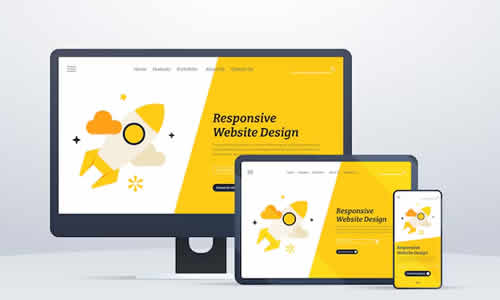Today, having a website that adapts to different devices is more important than ever. Responsive design is not just a trend; it has become a necessity for companies looking to optimize user experience. In this article, we will explore what responsive design is, why it is crucial, and how it can positively impact user interaction with your website.
What Is Responsive Design?
Responsive design refers to a web development approach that allows a website to adjust to different screen sizes and resolutions. This means that the layout, images, and other elements of the site adapt fluidly, providing a consistent and pleasant viewing experience regardless of the device used, whether it’s a smartphone, tablet, or desktop.
This type of design utilizes fluid grids and media queries to ensure that all components of the site resize and rearrange correctly. As a result, users do not need to zoom in or scroll horizontally to view content, significantly improving usability.
Why Is Responsive Design Crucial?
With the increase in mobile device usage for internet access, responsive design has become essential. According to studies, more than 50% of online traffic now comes from mobile devices. Therefore, if your site is not responsive, you may be losing a significant portion of your audience.
Additionally, Google prioritizes responsive sites in its search results. This means that an optimized site not only enhances user experience but can also positively impact your SEO. Sites that offer a superior browsing experience tend to have lower bounce rates and higher conversion rates, factors that Google considers when ranking pages.
Improving User Experience
A responsive site offers several advantages that enhance user experience:
- Accessibility: Users can access your site from any device without losing functionality or information. This ensures that everyone has a pleasant experience, regardless of how they choose to access your content.
- Loading Time: Responsive sites tend to be lighter and faster, which is crucial for keeping users’ attention. Loading speed is a determining factor in retaining visitors.
- Ease of Navigation: A design that adapts to the chosen device facilitates navigation. Elements such as menus and buttons are resized and repositioned to ensure they are easily accessible.
- Brand Consistency: A responsive site maintains the brand’s visual identity, regardless of the device. This reinforces user trust and familiarity, which are essential for loyalty.
Implementing Responsive Design
To implement responsive design, start by choosing a design framework that supports this approach. Frameworks like Bootstrap and Foundation offer tools and ready-made components to efficiently create responsive sites.
Additionally, test your site on different devices and browsers to ensure everything functions correctly. Tools like Google Mobile-Friendly Test can help identify issues and suggest improvements.
















